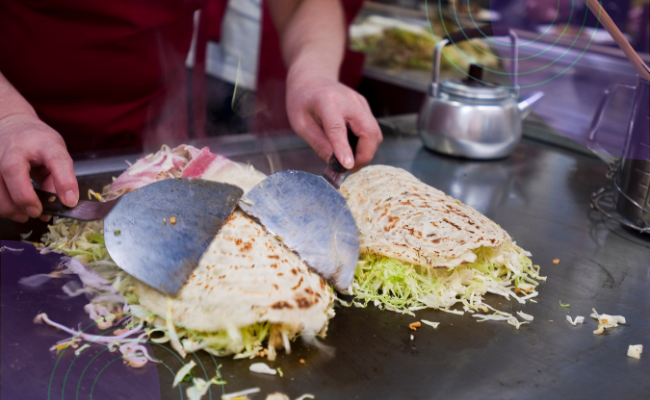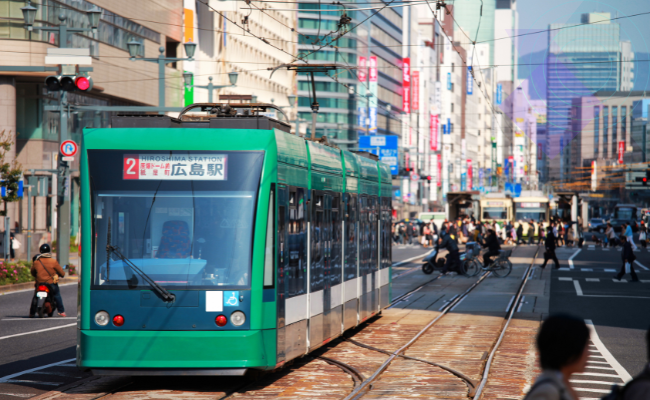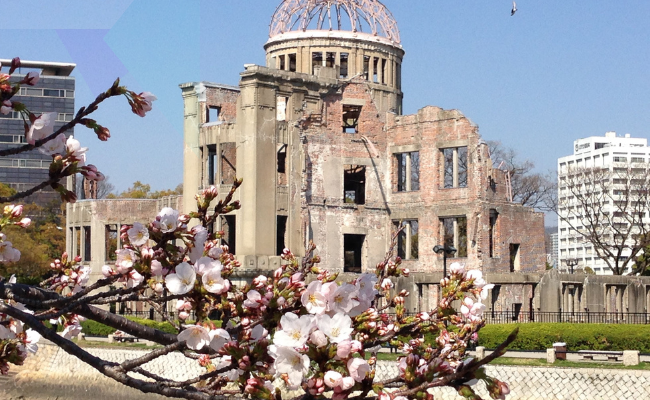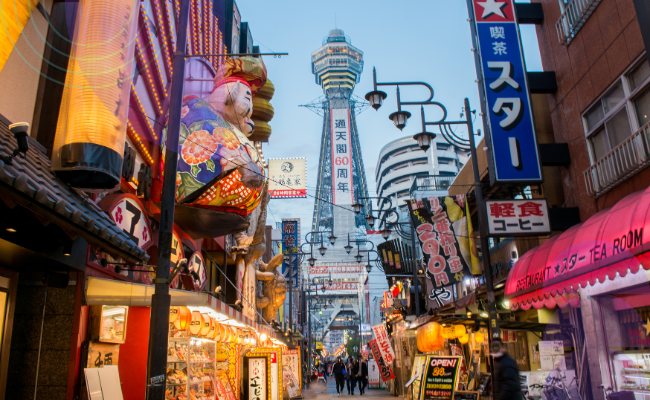Tokyo has countless incredible experiences, but which Tokyo experiences are truly unmissable?
With so many things to do in this vibrant city, it can be overwhelming to decide how to spend your precious time.
I have had the privilege of exploring Tokyo extensively over the years and there are certain Tokyo experiences that have left such a lasting impression on me that I find myself returning to them again and again.
To help you make the most of your time in Tokyo, below are the Tokyo experiences that I believe are absolutely unmissable, the ones that capture the true essence of this remarkable city.
#1 Sunset from Tokyo Skytree
You might think Tokyo Skytree is just another tourist spot, but it truly deserves a place on your list.
Watching the sunset from the Skytree is a magical experience. It’s not only about the incredible height or panoramic views. It’s about seeing Tokyo transform from day to night. The city below gradually lights up, with streets and buildings glowing like a web of lights, stretching as far as the eye can see.
The best way to do it is to book your ticket about 45 minutes before sunset. You’ll get daylight views, watch the sky shift through stunning colors, and then see Tokyo’s neon glow come alive.
It’s popular for a reason, and sometimes the classic experiences are the ones that leave the most lasting memories.
Tokyo Skytree, also written as Tokyo Sky Tree, is a broadcasting and observation tower located in Sumida, Tokyo, Japan.
Located in: Tokyo Skytree Town
Address: 1 Chome-1-2 Oshiage, Sumida City, Tokyo 131-0045, Japan
How to Get to Tokyo Sky Tree
Take a train to Tokyo Skytree Station (Tobu Skytree Line) or Oshiage Station (Hanzomon, Asakusa, or Keisei Oshiage Lines), both connected to the tower complex. You can also take a direct shuttle bus from major locations like Tokyo Station, Haneda Airport, and Tokyo Disney Resort. For a scenic route, it’s about a 20-minute walk across the Sumida River from Asakusa.
Tickets: You can buy your Tokyo Skytree tickets here
#2 Shibuya Crossing at Rush Hour
Everyone talks about Shibuya Crossing, and for good reason. Experiencing it during rush hour truly captures Tokyo’s energy and organization.
I have crossed this intersection countless times, and I am still amazed by how smoothly it operates. When the lights change, you become part of Tokyo’s daily rhythm with thousands of people moving efficiently and respectfully. It might look like chaos from above, but it is actually an incredible display of coordination.
Start by crossing alongside everyone else to feel the pulse of the city. Then head up to Starbucks or Shibuya Sky to watch the patterns from above. Seeing the flow of commuters, shoppers, and visitors all moving together is remarkable.
The whole experience takes about 30 minutes and costs nothing. It is a popular activity for a reason. Shibuya Crossing captures the scale, energy, and organization of modern Tokyo.
How to Get to Shibuya Crossing
To reach Shibuya Crossing, take a train to Shibuya Station and follow signs for the Hachiko Exit (Hachiko-guchi Gate). Once you exit, the iconic crossing is right in front of you.
#3 Early Morning at Meiji Shrine
Visiting Meiji Shrine at dawn is a completely different experience than during the busy daytime hours. I like to arrive right when it opens at 5 AM, though opening times vary by season. The forest is quiet, with only the sound of gravel underfoot and birds singing in the trees. The air is fresh and clean, a peaceful contrast to the bustling city just outside.
Walking through the towering torii gates in the soft morning light feels almost sacred. You may see visitors doing their morning prayers or watch shrine maidens preparing for the day’s ceremonies.
Spending about an hour here is the perfect way to center yourself before exploring Tokyo. You will also have an opportunity for beautiful photos without crowds in the background.
How to Get to Meiji Shrine
Take the JR Yamanote Line to Harajuku Station or the Tokyo Metro Chiyoda and Fukutoshin Lines to Meiji-jingumae Station. Both stations are about a 10-minute walk to the shrine’s entrance.
Early Morning at Tsukiji Outer Market
Experiencing Tsukiji Outer Market in the early morning is a special way to start your day in Tokyo. The city is just waking up, and the market has a unique energy that never gets old. Vendors are setting up their stalls, the aroma of fresh seafood and grilled fish fills the air, and you can feel the authentic pulse of Tokyo’s food culture.
For breakfast, fresh tuna sashimi from one of the small stalls is unbeatable. The fish is incredibly fresh and practically melts in your mouth. Eating alongside local workers starting their day gives you a real glimpse into daily life in Tokyo.
Make sure to try the thick, sweet tamago egg sandwiches. They are surprisingly satisfying and the perfect fuel for exploring the city ahead.
#4 How to Get to Tsukiji Outer Market
Take the Tokyo Metro Hibiya Line to Tsukiji Station and exit at Exit 1 or 2, or take the Toei Oedo Line to Tsukiji-Shijo Station and use the A1 Exit. Both stations are just a one-minute walk from the market. You can also walk from Shimbashi Station on the JR Yamanote Line, which takes about 15 minutes.
#5 Late Night in Golden Gai
Golden Gai in Shinjuku is unlike anywhere else in Tokyo, and visiting it late at night is a must for anyone wanting to experience the city’s social culture.
The tiny bars, many of which fit only 4 to 6 people, create an intimacy that is rare in a city of 14 million. Some of the most memorable conversations I have had happened in these shoebox-sized spaces. After 10 PM, the bars fill up with an eclectic mix of locals and visitors. Each bar has its own personality, often reflecting the owner’s interests or background.
Language is rarely a barrier here. The combination of small spaces and good drinks creates a kind of universal language. Some of my favorite nights were spent in bars where I barely spoke the language but connected with people in meaningful ways.
Remember to respect the intimate atmosphere and be prepared for cover charges. They are part of what makes Golden Gai such a unique experience.
How to Get to Golden Gai
To reach Golden Gai, take a train to Shinjuku Station and exit from the East Exit, then walk 5 to 7 minutes toward the Kabukicho area. Alternatively, take the Tokyo Metro to Shinjuku-sanchome Station and use Exit E1 or E2 for a 3 to 5 minute walk. Look for the cluster of small two-story buildings and lanterns to find the entrance to the narrow alleys.
#6 Dinner at a Neighborhood Izakaya
Skip the fancy restaurants in guidebooks and seek out a small neighborhood izakaya. These local spots are where Tokyo’s real food culture comes alive.
I have spent countless evenings in tiny izakayas tucked away in residential neighborhoods, and they never fail to impress. The food is fresh, the atmosphere feels authentic, and the prices are very reasonable.
Look for places with no English menu – it’s usually a good sign. Point at what looks good, try the daily specials, and don’t be afraid to order dishes you’ve never tried before.
Some of my favorite izakaya experiences have been in neighborhoods like Kichijoji, Nakameguro, and Shimokitazawa. These areas have a local feel, and many izakayas are family-run, giving you a genuine connection to Tokyo’s food scene.
Pair your meal with local sake or a cold beer, and you’ll quickly understand why izakayas are at the heart of Tokyo’s social culture.
Best Izakayas in Tokyo for an Authentic Experience
Shokudō Todaka (食堂とだか)
B1, 1 Chome−9−3 Nishigotanda, Shinagawa City, Tokyo 141-0031, JapanKanemasu (かねます)
1 Chome−8−1 Kachidoki View Tower 1F, Chuo City, Tokyo 104-0054, JapanKotaro (高太郎)
28-2 Sakuragaokacho, Shibuya, Tokyo 150-0031, JapanKishidaya (岸田屋)
3 Chome-15−12 Tsukishima, Chuo City, Tokyo 104-0052, JapanSowado (創和堂)
1 Chome−12−15 Riverside Building 1F, Hiroo, Shibuya, Tokyo 150-0012, Japan
#7 Explore Odaiba
Odaiba is a man-made island in Tokyo Bay that offers a mix of entertainment, shopping, and stunning views of the city skyline. It is a perfect spot to relax and enjoy a different side of Tokyo.
You can stroll along the boardwalk, visit teamLab Planets or teamLab Borderless for immersive digital art experiences, and take photos of the Rainbow Bridge and the replica Statue of Liberty. The area also has shopping centers, casual restaurants, and a seaside park where you can unwind.
Odaiba is especially beautiful in the evening when the city lights reflect on the water, creating a serene yet vibrant atmosphere. Spending a few hours here gives you a balance between sightseeing, culture, and relaxation and is a great addition to any Tokyo itinerary.
How to Get to Odaiba
To reach Odaiba, take the Yurikamome Line for scenic views of Tokyo Bay or the Rinkai Line for direct access. From major hubs like Tokyo Station, transfer at Shimbashi Station to the Yurikamome Line. If coming from Shinjuku or Shibuya, the Rinkai Line is convenient. You can also enjoy a scenic ride on the Tokyo Water Bus or use city buses and taxis to reach the island.
I hope you enjoy these experiences as much as I do and get the chance to try a few while you’re in Tokyo. Each one has given me a new way to see and feel the city, and I think they’ll do the same for you. I’d love to hear which ones you end up loving the most and any discoveries you make along the way.
For a complete plan and more insider tips, check out our full Tokyo Travel Guide.





